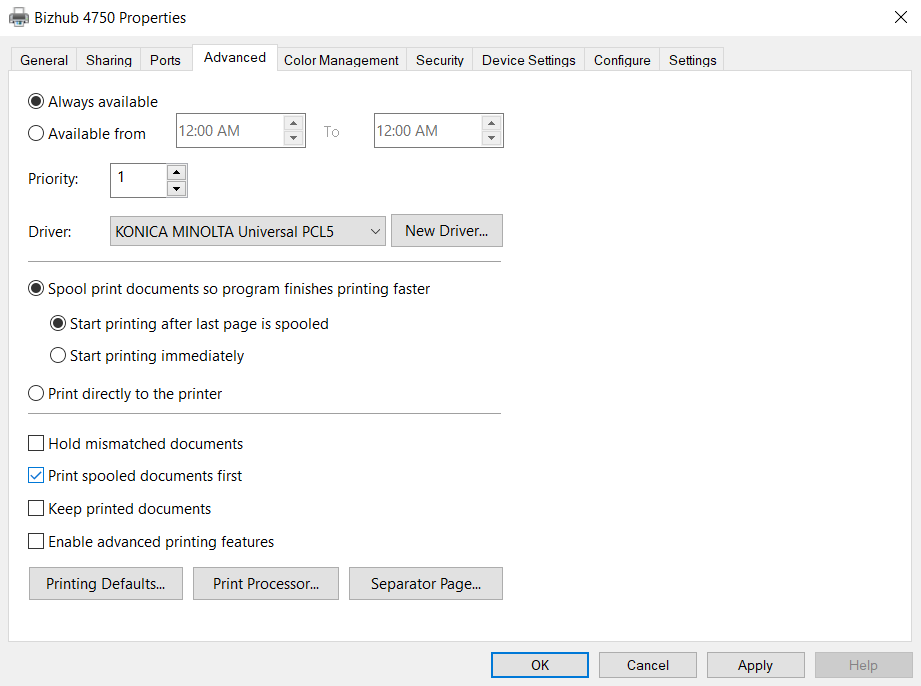**Originally published on October 30, 2018**
Are you still experiencing mind-numbingly slow print speeds in 2022?
As consumers of modern technology, it’s natural to want instant gratification. Think of Veruca Salt, the spoiled little rich girl from Willy Wonka and the Chocolate Factory, sing-shrieking, “I don’t care how, I want it NOW!” and you’ve successfully captured the attitude of many end users.
Consider the agonizing eternity from when you click “Print” to the moment when the hum of your printer finally starts. While you waited, you could’ve watched an episode of your new go-to Netflix Series, read an article from your favorite website, or run some errands. Seriously, some print jobs take FOREVER! And when you print, you want it NOW!
Let’s look at a few possible causes for slow network printing and some solutions to this problem.
The Culprits of Slow Network Printing
Print Server Overload: Could the cause of slow network printing be the Windows print server in your data center with poor WAN connectivity to your remote branch office? Although it sounds like one of the solutions in a game of Clue, it is a possible culprit. It’s also why many organizations opt for a distributed print server model over a centralized model to help cut out WAN-related printing challenges and localize network traffic. BEWARE: Moving to a distributed model can be a very costly way to address slow print speeds.
WAN-Related Challenges: WAN-related print challenges are common in many Citrix environments. Whether you’re using Citrix auto-creation or printer redirection, you need locally created printers that send jobs back to the data center or a local print server. The Citrix Universal Print Driver (UPD) does offer compression—but that’s only when the jobs travel to the Citrix server. These print jobs can expand up to 80% after rendering, at which point they have to make their way to your print server and, finally, to your printer.
For a more detailed explanation of Citrix-related printing problems, check out this blog post on three common Citrix printing problems and how to solve them.
Printer Overexertion: Another common printing problem is when a printer tries to do too much. You’ve probably never thought of your printers as people-pleasers, but they are. They try to do everything for everyone, and sometimes all at once. And when there is a large client pool you can expect even more problems to arise. Things like splitting (i.e., prioritizing) print jobs and job sizes might slow your network printing speed.
Some Short-Term Fixes for Slow Network Printing
Adjust Print Server Configurations: To improve print speed in Windows, take a look in your system settings and find the printer in question. Select “Properties” and ensure that the option under the “Advanced” tab labeled “Spool print documents so program finishes printing faster” is selected along with the sub-selection “Start printing after the last page is spooled”. Finally, you’ll want to check the “Print spooled documents first” option. These steps will ensure that the splitting doesn’t happen and that small print jobs don’t get stuck behind large jobs that take forever to spool.

Other viable options include:
Eliminate Unused Drivers: Although they aren’t being used in your repository, any lingering monitoring software they use could be eating up precious RAM.
Use a Dedicated Hard Drive: You might find that using a dedicated hard drive for spooling, especially an SSD (solid-state drive), could improve things.
Increase Your Hard Disk Space: As mentioned with Citrix print servers, print jobs grow multiple times in size when rendered. If you try increasing your hard disk space, your print servers may be able to take on more print jobs and speed up the printing process.
Close All Unnecessary Connections: Just like apps running in the background on your smartphone, client connections to print servers can stay active for a long time and cause speeds to lag. You can view these open connections via the windows server management functionality.
If all else fails, maybe a bigger, better, more expensive print server might help.
But before you do that, stop and take a deep breath. I might have the answer.
The Game-Changing Alternative to Slow Print Servers
While the options mentioned above may be feasible, they aren’t guaranteed to work. As you decide on the best route for your organization, consider looking into PrinterLogic as a permanent solution to fix your slow network printing challenges so you can finally get the lightning-fast printing you deserve.
Whether you’re in the SMB space or an enterprise company, PrinterLogic successfully converts printing environments into an optimized, centrally managed direct IP printing model that eliminates the single point of failure created by print servers, saves time by eliminating scripting and GPOs, and is completely printer-agnostic.
PrinterLogic offers both a cloud-based solution called PrinterLogic SaaS as well as an on-premise solution to fit any print environment.

